
The Croix de Guerre is a military decoration of France. It was first created in 1915 and consists of a square-cross medal on two crossed swords, hanging from a ribbon with various degree pins. The decoration was first awarded during World War I, again in World War II, and in other conflicts; the croix de guerre des théâtres d'opérations extérieures was established in 1921 for these. The Croix de Guerre was also commonly bestowed on foreign military forces allied to France.

The Distinguished Flying Cross (DFC) is a military decoration of the United States Armed Forces. The medal was established on July 2, 1926, and is currently awarded to any persons who, after April 6, 1917, distinguish themselves by single acts of heroism or extraordinary achievement while participating in aerial flight. Both heroism and extraordinary achievement are entirely distinctive, involving operations that are not routine. The medal may be awarded to friendly foreign military members in ranks equivalent to U.S. Pay Grade of O-6 and below, in actual combat in support operations.

The Navy Cross is the United States Naval Service's second-highest military decoration awarded for sailors and Marines who distinguish themselves for extraordinary heroism in combat with an armed enemy force. The medal is equivalent to the Army's Distinguished Service Cross, the Air and Space Forces' Air Force Cross, and the Coast Guard Cross.

The Distinguished Service Cross (DSC) is the United States Army's second highest military decoration for soldiers who display extraordinary heroism in combat with an armed enemy force. Actions that merit the Distinguished Service Cross must be of such a high degree that they are above those required for all other U.S. combat decorations, but which do not meet the criteria for the Medal of Honor. The Army Distinguished Service Cross is equivalent to the Naval Services' Navy Cross, the Air and Space Forces' Air Force Cross, and the Coast Guard Cross. Prior to the creation of the Air Force Cross in 1960, airmen were awarded the Distinguished Service Cross.

Peter Charles Lemon is a former United States Army soldier and a recipient of the United States military's highest award for valor, the Medal of Honor. He received the award for his actions on April 1, 1970, while serving in Tây Ninh Province during the Vietnam War. Lemon is the only Canadian-born United States citizen to be presented the medal for fighting in the Vietnam War. He is the eighth-youngest living Medal of Honor recipient.
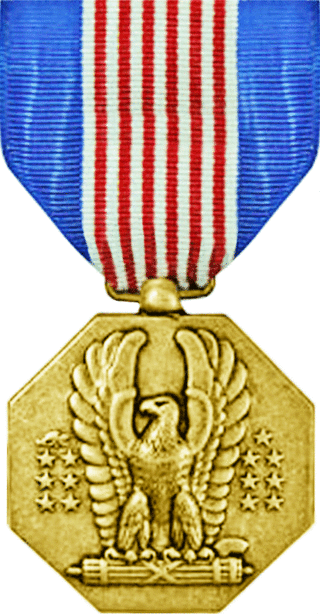
The Soldier's Medal is an individual decoration of the United States Army. It was introduced as Section 11 of the Air Corps Act, passed by the Congress of the United States on July 2, 1926. The Soldier's Medal is equivalent to the Navy and Marine Corps Medal, the Air and Space Forces' Airman's Medal, and the Coast Guard Medal. Prior to the creation of the Airman's Medal in 1960, airmen were awarded the Soldier's Medal.
A "V" device is a metal 1⁄4-inch (6.4 mm) capital letter "V" with serifs which, when worn on certain decorations awarded by the United States Armed Forces, distinguishes an award for heroism or valor in combat instead of for meritorious service or achievement.
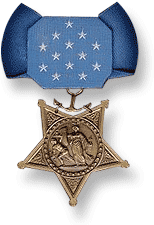
Lieutenant Commander John McCloy, USN was an officer in the United States Navy who was one of only 19 individuals to receive the Medal of Honor twice. He received his first Medal of Honor for action in the Boxer Rebellion in June 1900. His second Medal of Honor came in 1915 for action in Vera Cruz, Mexico in April 1914.

Earle Davis Gregory was an American soldier and World War I Medal of Honor recipient for his heroic actions in 1918 during the Meuse-Argonne Offensive in France.

The Stolen Valor Act of 2005, signed into law by President George W. Bush on December 20, 2006, was a U.S. law that broadened the provisions of previous U.S. law addressing the unauthorized wear, manufacture, or sale of any military decorations and medals. The law made it a federal misdemeanor to falsely represent oneself as having received any U.S. military decoration or medal. If convicted, defendants might have been imprisoned for up to six months, unless the decoration lied about is the Medal of Honor, in which case imprisonment could have been up to one year. In United States v. Alvarez (2012), the Supreme Court of the United States ruled that the Stolen Valor Act of 2005 was an unconstitutional abridgment of the freedom of speech under the First Amendment–striking down the law in a 6 to 3 decision.

Richard Enderlin was a musician and United States Army soldier who received a Medal of Honor for the heroism he displayed when fighting in the Battle of Gettysburg in 1863.

Barney Fushimi Hajiro was an American combat veteran of World War II who received the Medal of Honor, the highest United States military award for valor.
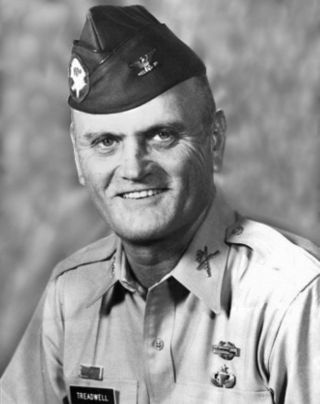
Jack LeMaster Treadwell was a United States Army colonel and a recipient of the United States military's highest decoration for valor—the Medal of Honor—for his actions in World War II. At the time of his retirement, Treadwell was believed to be the most decorated man in the United States Armed Forces.
Patrick Francis Bresnahan was a watertender serving in the United States Navy who received the Medal of Honor for bravery.
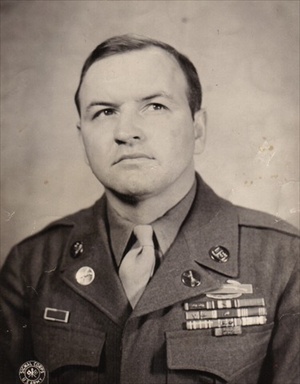
Llewellyn Morris Chilson was a United States Army master sergeant and one of the most decorated American soldiers of World War II. He received twelve individual decorations for combat from the U.S. Army including seven decorations for valor. After the war, the President of the United States personally decorated Chilson with seven decorations including three Distinguished Services Crosses for extraordinary heroism in Germany.

The Medal of Honor (MOH) is the United States Armed Forces' highest military decoration and is awarded to recognize American soldiers, sailors, marines, airmen, guardians and coast guardsmen who have distinguished themselves by acts of valor. The medal is normally awarded by the president of the United States, but as it is presented "in the name of the United States Congress", it is sometimes referred to as the "Congressional Medal of Honor".

Jose Rodela is a United States Army veteran of the Vietnam War and a recipient of the Medal of Honor.

Charles Gilbert Gould was a Union Army soldier in the American Civil War who received the U.S. military's highest decoration, the Medal of Honor.
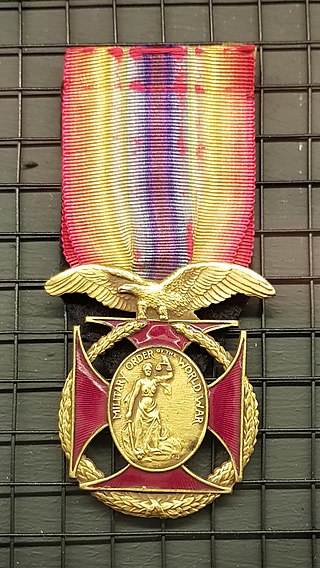
The Military Order of the World War was created in 1919 at the suggestion of General of the Armies John J. Pershing as a fraternity for American military officers coming out of the Great War. Two decades later, when the USA became involved in WWII the organization name was pluralized to its current title of Military Order of the World Wars. Though the Order's title has not changed since 1945, it remains an officers’ society welcoming new qualified members in current military service, retired military service, or former military service and has members from the Korean War, Vietnam War, Gulf War, War in Afghanistan, War in Iraq, and peacetime service.
















